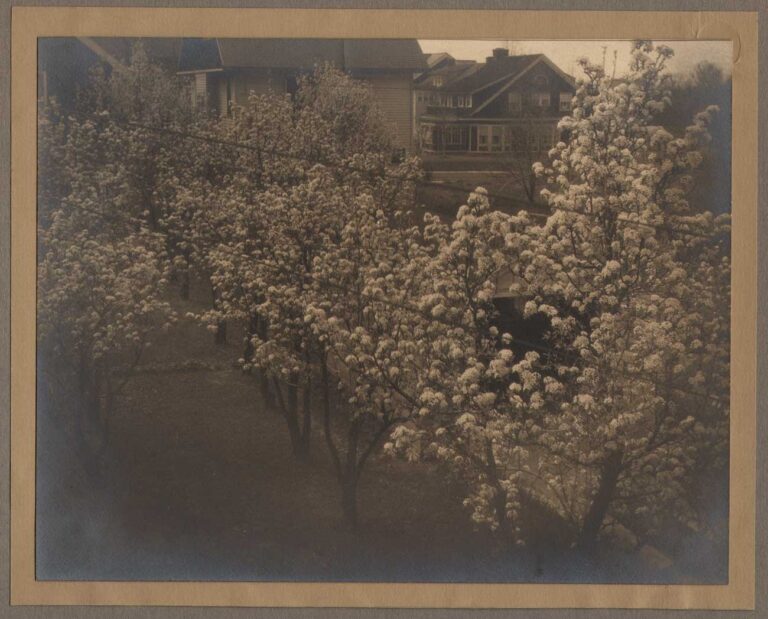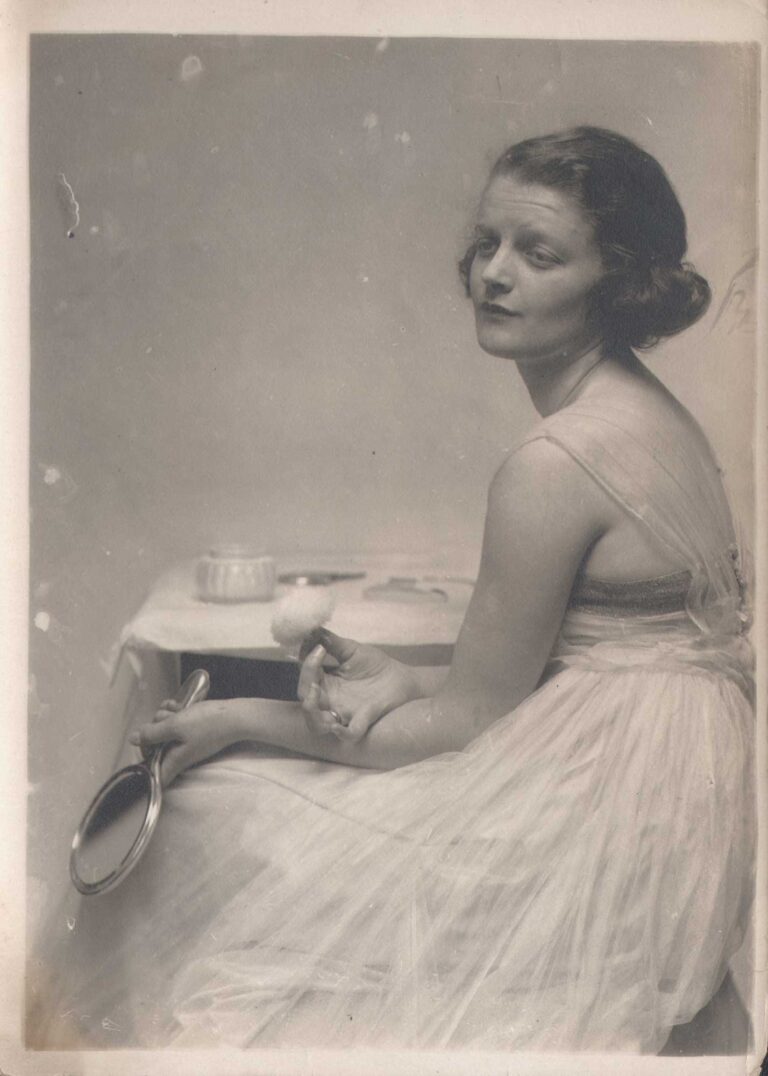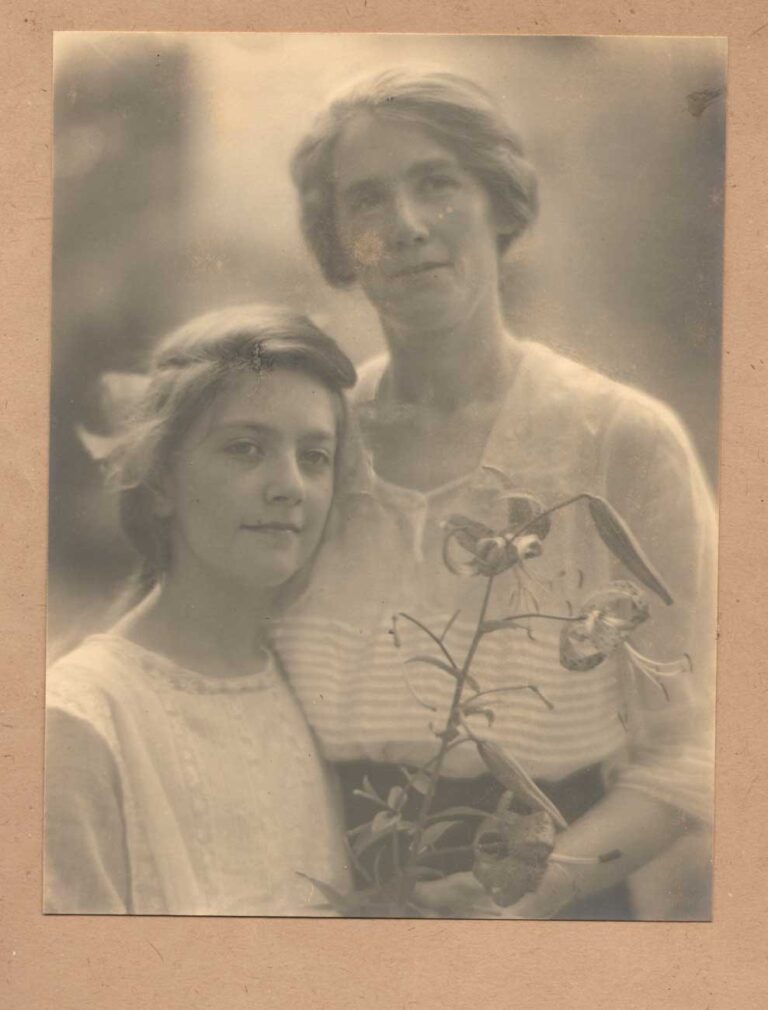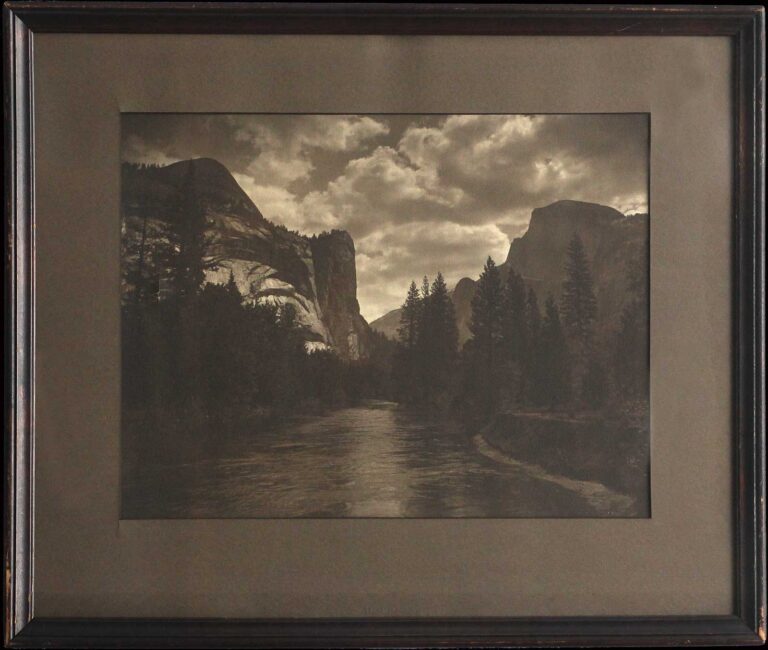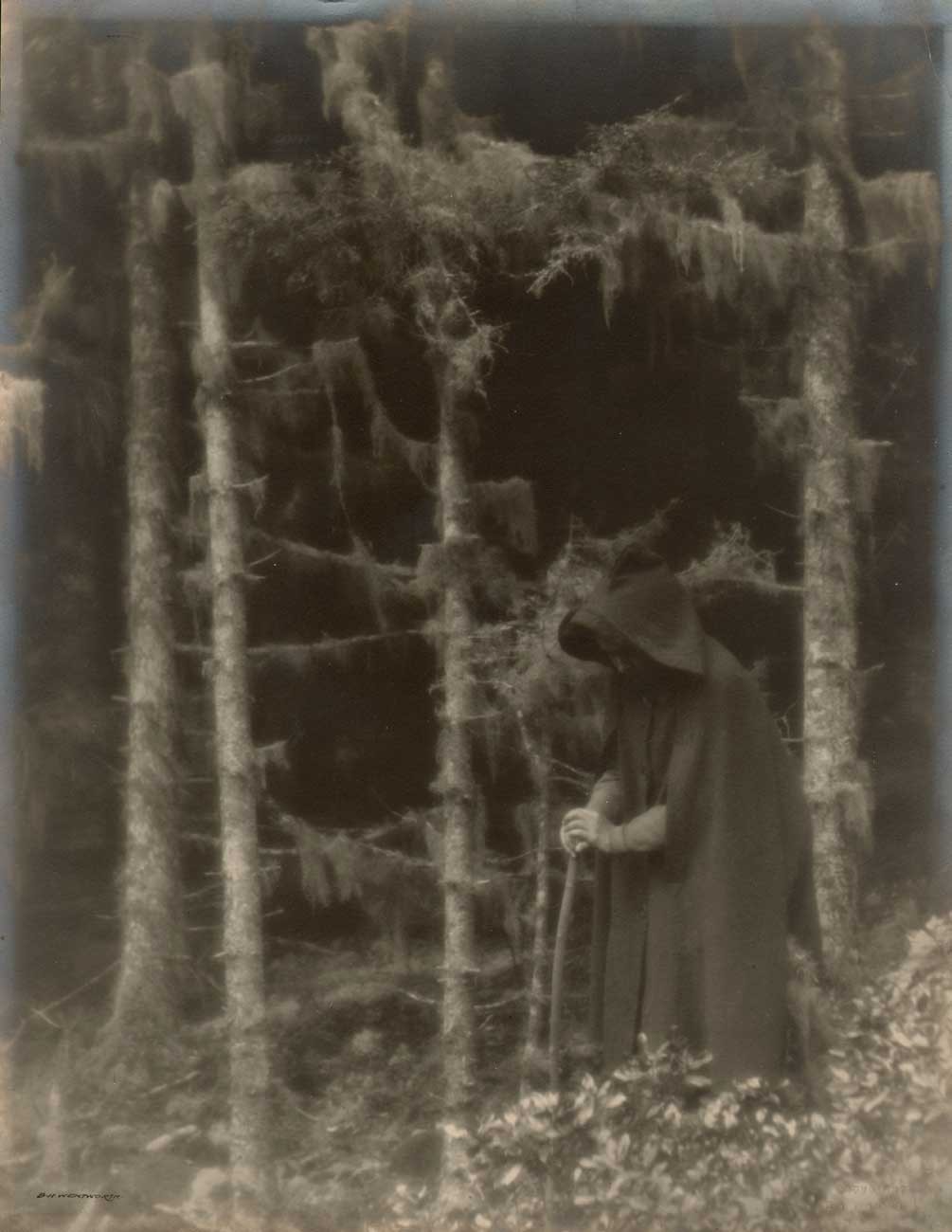
Witches’ Wood
American pictorialist Bertrand Hebron Wentworth, (1869-1953) a photographer from Gardiner, Maine who spent time at the artists colony on Monhegan Island off the Maine coast and described as a “master craftsman” affiliated with the Society of Arts and Crafts of Boston had his work exhibited in the United States from around 1915-1920. This photograph: Witches’ Wood, is most likely a self-portrait of the photographer taken in the Maine woods.
An early notice of Wentworth’s work appeared in the July, 1916 issue of the journal Arts & Decoration:
At the Palette and Chisel Club, the Wentworth Photographs have brought New England shores in an artistic guise closer to the lover of landscape. Bertrand H. Wentworth’s camera is trained to the selectiveness of the exacting etcher or painter of compositions. There must be a keen sense of color in the photographer, else his fine pictures would not show the elements of distinction in black and white or sepia prints. Each print is signed and but one before the public, the exclusiveness giving the value of a monotype. (p. 439)
Working methods for Wentworth were outlined in the following 1919 article:
BERTRAND H. WENTWORTH, a group of whose photographs are reproduced herewith, is a master craftsman of the Society of Arts and Crafts, Boston, and holds a prominent place among contemporary pictorial photographers.
He uses photography as the painter uses pigments, as a medium of expression—a means whereby nature may be pictorially interpreted. He has those prerequisites of art—keen appreciation of beauty in nature —knowledge of composition, understanding of the relation of light and shade, technical skill—and we might truly add— unending patience.
As with his medium, effects must be translated upon the spot (never from memory), he must be ready to take instant advantage of the moment desired, and for which he has often long waited. His pictures are not accidents. First he finds his composition; then he waits, sometimes hours, sometimes days, occasionally months for the right effect of sunshine or mist, flat light, or accentuating shadow. It is often said that the perfect composition is rarely found in nature, and it is true that the artist’s business is to carry out through his art nature’s intention. The photographer like Mr. Wentworth does this by matter of choice and by astutely working with light and atmosphere as adjuncts. The sea, the pine woods, winter landscapes, he has made his specialty, and the majority of his themes he has found in the vicinity of his home at Gardiner, Maine.
He began making pictures for his own pleasure, and exhibiting them for the benefit of his friends and neighbors. Gradually his work became known outside of his state, and in recent years exhibitions of his prints have been shown by invitation in many of the leading American Art Museums. His art is of a high order. (1.)
And the following review of his work at the Corcoran in Washington, D.C.:
The Wentworth Photographs
At the Corcoran Gallery of Art, Washington, D. C., from March 1 to 15, 1919, an exhibition of pictorial photographs was held, the work of Mr. Bertrand H. Wentworth, of Gardiner, Maine, comprising, almost entirely, new examples obtained at Monhegan during the season of 1918. Without further comment, the fact that this display was under the auspices of the Corcoran authorities is sufficient evidence of the excellence of the exhibits.
Among the number the following may be mentioned as of unusual merit: “A Mixed Company,” “The Coming of a Fair Wind,” “An Upland Twilight,” “The Flocks of the West Wind,” “An October Sea,” “Evening after Storm,” “Snow” (a Salon picture), “Drying the Sails,” “Sunlit Spray,” “The Mist of an Outwind,” “Mighty Music,” “Easterly Weather,” “Out of the Nor’ East.”
From April 1 to 12, 1919, there will be another exhibition of Mr. Wentworth’s pictures at the gallery of the Society of Arts and Crafts, No. 9 Park Street, Boston, Mass., embracing other photographs; and we would advise any of our subscribers who may be in that vicinity at that time to attend. Mr. Wentworth is a Master Craftsman of the above society and possesses its bronze medal for excellence of achievement. The work of this versatile and accomplished pictorialist is sought after throughout the country and is included in the collection of many of our best-known and capable connoisseurs. (2.)
Other known earlier exhibits of “The Wentworth Photographs” in the United States included:
1916: Gallery of the Newark Museum Association : from: March 28-April 8
1917: Indianapolis Museum of Art : from: January 1-27
print details recto: signed in black ink at lower left corner: B.H. Wentworth.
blind-stamp at lower right corner:
COPYRIGHT
B.H. WENTWORTH.
print details verso:
titled in black ink:
0548 WITCHES’ Wood.
ink-stamp:
Copyright B.H. Wentworth
From B.H. Wentworth
Gardiner, Maine
graphite inscription at center:
0548 #
This loose photograph was issued in a gray/beige colored bi-fold folder. On folder recto in upper left corner is red ink-stamp:
The Wentworth Photographs
Bertrand H. Wentworth
Gardiner, Maine
on folder verso is a pasted white label (3.2 x 5.8 cm) printed as follows:
The Wentworth Photographs
Bertrand H. Wentworth
Gardiner,Maine
Number 0548
Title Witches’ Wood.
Copr. B.H. Wentworth
notes:
1. Mr. Wentworth’s Pictorial Photographs: in: The American Magazine of Art: Oct., 1919: p. 472. The following halftone photographs accompanied the article: Snow, The Coming of a Fair Wind, Leaping Surf, The Seventh Wave
2. Views and Reviews: The Wentworth Photographs: in: The Photographic Journal of America: New York/Philadelphia: published by the Edward L. Wilson Company Inc.: April, 1919: pp. 179-80
